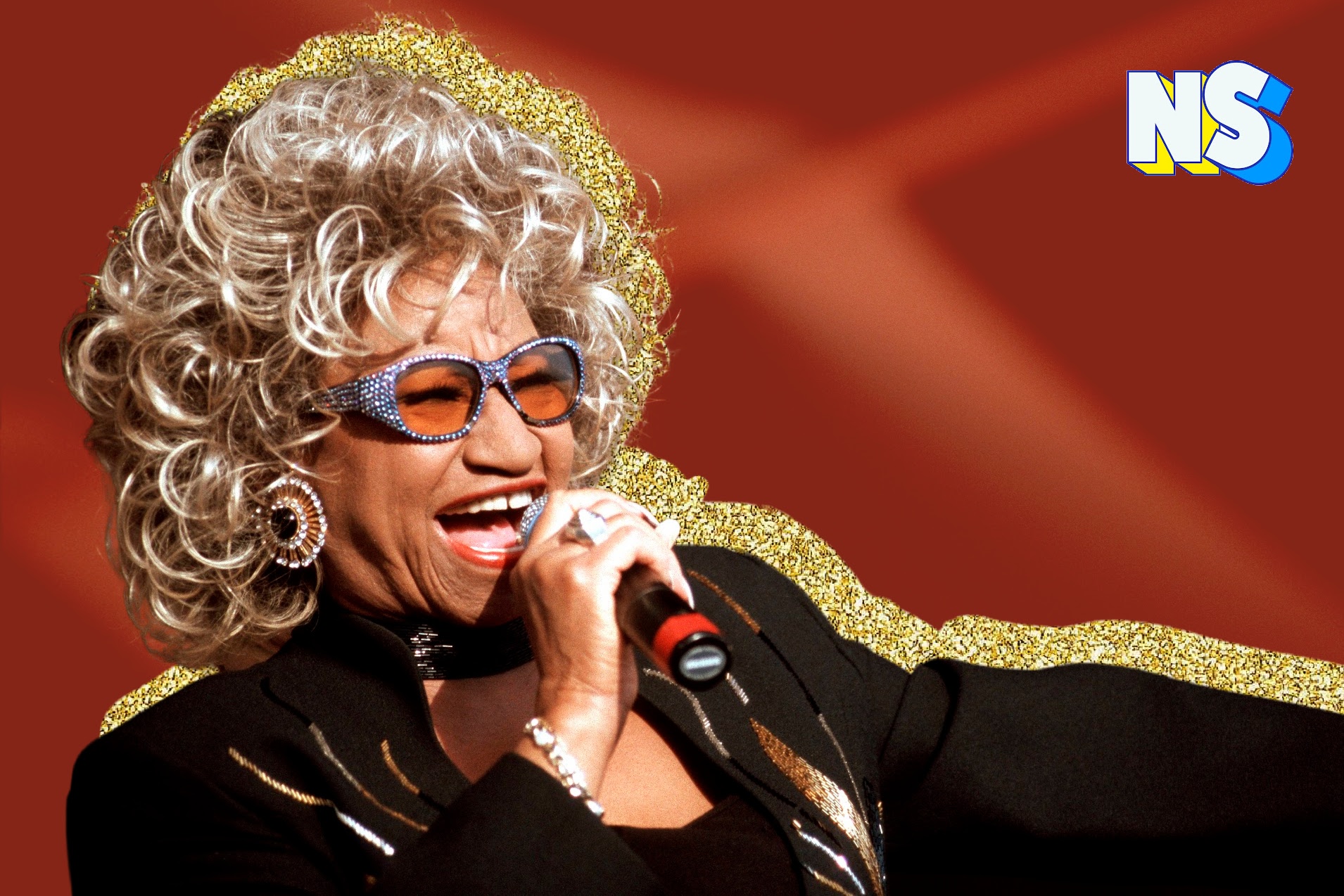Credit: Nuestro Stories
When she died, tens of thousands mourned the Queen of Salsa. Her funeral brought New York City to a standstill as weeping fans holding red roses and her photo and albums above their heads lined Manhattan’s Fifth Avenue for one and a half miles to bid farewell to Cuban-born singer Celia Cruz.
They shouted her name and sang her songs as her golden casket, carried in a glass-encased, horse-drawn carriage draped in the Cuban flag, traveled from an Upper East Side funeral home. It was followed by a line of black limousines strewn with flowers. When the church service began, American singer Patti LaBelle sang “Ave Maria.”
It was a regal sendoff for our Caribbean Queen.
Cruz, 78, died of a brain tumor at her Fort Lee, New Jersey home. She left behind an enduring legacy, having performed for five decades, recorded more than 70 albums – 23 of them went gold – and won two Latin Grammys and five Grammys. She also appeared in 10 movies.
Her songs “La Negra Tiene Tumbao,” “Yerberito Moderno,” and “Que le Den Candela” are set in our collective memory. But the one that plays in this writer’s head is “La Vida es Un Carnaval.” Try and be sad listening to Celia belt that song out.
“Todo aquel que piense que la vida es desigual
Tiene que saber que no es así
Que la vida es una hermosura, hay que vivirla …
Ay, no hay que llorar (No hay que llorar)
Que la vida es un carnaval
Y es más bello vivir cantando.”
Cruz was one of Cuba’s most beloved singers, but she had to flee the island after Fidel Castro came to power. She refused to return to the island while Castro was in power (although she famously sang in Guantanamo, much to the displeasure of the Cuban authorities) and became a United States citizen in 1961.
Read more: ‘Como La Flor,’ the Song That Immortalized Selena
Celia Cruz was a force to be reckoned with
Known as the “Guarachera de Cuba,” Cruz was one of the most important voices representing the island, singing son, guaracha, rumba, bolero, and salsa.
She was born in La Habana in 1925 and grew up in the capital city’s poor neighborhood of Santos Suárez, a place teeming with diverse musical influences.
Cruz’s musical career started in the 1940s when she won the “La hora del té” (“Tea Time”) singing contest. However, her mother wanted her to enter other contests and pursue a singing career; her father wanted her to be a teacher – a career considered proper for a Cuban woman of that time.
She did enroll in the National Teachers’ College for a while but dropped out when her live and radio performances started getting noticed. Cruz then enrolled at Havana’s National Conservatory of Music to appease her father, but a teacher there convinced her she was good enough to go after a full-time singing career.
She first recorded in 1948, and in 1950 she became a star as the singer for the celebrated orchestra Sonora Matancera. Her voice, charisma, and delivery propelled the orchestra and Latin music to never before reached heights and conquered Latin America and the United States.
Cruz is one of the 20th century’s most popular Latin musicians, beloved worldwide.
https://nuestrostories.com/wp-content/uploads/2022/06/Susanne-182×250.jpeg





